Angela Warburton, R.TCMP
Most people don’t need to be sold on the benefits of cleansing. And it’s not uncommon that people feel the need to cleanse, or at least clean up their diet after the indulgent holiday season. “Toxic overload” can have many faces: headaches, allergies, skin eruptions, fatigue, insomnia, mood swings, digestive complaints and chronic pain are just a few that creep in when the body needs a break. Not to mention the bloating and lethargy and just the general feeling of ‘ick’ that accompanies the post-holiday indulgence.
The thing many people don’t consider is how their cleanse should change according to what season they are in.
The ‘ideal’ time to cleanse in a traditional way is the spring. When all the naturally cleansing green foods are starting to sprout and we start to shift from the heavier and somewhat stodgy winter foods into a fresher and more cleansing diet.
But cleansing after a particularly indulgent time can also have huge benefits. But before you run off to buy a juicer or get all “raw food or bust” on me, there are a few things you should consider when doing a cleanse in the winter months.
First off, the basics of cleansing remain the same – remove the toxins or congesting foods. Avoiding refined foods (flour based products), sugars, caffeine, dairy, alcohol, processed meats and tobacco. Include naturally detoxifying foods in your diet daily which will help to facilitate the cleansing process and correct any toxic overload.
The liver, lungs, kidneys and colon are the primary sites in the body where toxins are processed and eliminated so it is important to target all these organs when cleansing.
When cleansing in the cold winter months, you don’t necessarily want to change the healthy foods you are eating, but rather, change how you are eating them.
When it’s cold outside, we want to keep warm. We do this by how we dress, how we live and the temperature in our homes but also, very importantly, how we eat.
In Chinese Medicine, we look not only at the nutritional values of foods, but also their properties. Some foods are naturally cooling (think peppermint and watermelon) and some warming (think ginger and cinnamon). Some foods are moistening (Dairy or sugar) and some drying (bitter greens). We want to use foods that are going to help nourish us but also balance us out. Intuitively it makes sense – if you’re cold, warm up, if you’re hot, cool down. Somehow we’ve lost touch with that in our modern culture, often eating raw, frozen or ‘cooling’ foods in the heart of winter and then wonder why we’re cold all the time or why our digestive system goes wonky.
Everything that we eat needs to be warmed up above body temperature for the digestive enzymes to kick in so we can digest our food. And then we need to break our food down into a soupy consistency so our bodies can absorb the nutrients. If we’re eating foods that are cold, frozen or raw, our body has to work harder to break them down. Do that same thing in the middle of winter, it’s even harder for your body. Think of it like adding a block of ice to a soup your trying to make – It’s never going to work.
Foods grown in the late summer and fall are naturally more warming in properties. Late fall squash, beets, and warming spices such as ginger have more of the energy we need in the cold weather months.
So to customize your cleanse in a way that will not only give your organs a cleansing break but also keep you toasty warm and balanced this winter, try some of the following suggestions:
- Include these warming spices more in winter cleansing than in the summer: Cumin, cardamom, ginger, fennel, cinnamon, turmeric, nutmeg, black pepper etc.
- Cook your foods, even lightly to maximize the absorption of nutrients and take the work out of your digestion.
- If you consume cold pressed juices try to add ginger to them and consume them at room temperature or even warm them a bit by adding hot water to them to off set the cooling properties
- Think soup. Eating pureed soups is a great way to get the cleansing components of vegetables and it is in the exact form your digestive system needs to maximize absorption of nutrients and feed your cells with very little extra work for your digestive system. If you’re someone how has trouble losing weight, is chronically congested or has loose bowels, this can be one of the best things you can do to balance out your system.
- Exercise but don’t over-do it. Moderate exercise is great for detoxing. Bundling up and getting outside can actually do wonders for your immune system too, which will help to keep you healthy through the winter.
- Use dry brushing and a hot bath to help detox though your skin
(note: if you’re someone who’s cold all the time naturally, and often wear socks to bed or cardigans in the summer, you might look to apply these cleansing principles year round. Perhaps just adding slightly more fresh food in the spring or summer but keeping the bulk of your food warm and lightly cooked)
Other detoxifying tips include:
- Drinking plenty of water- it is essential to help flush toxins from your system. You can include more warm water with lemon in the winter months to keep the heat in and your body warm.
- Try eating your largest meal mid-day and avoid late night eating to give your organs a chance to rest and detoxify over night
- Be sure to eat lots of high fiber foods such as whole grains, chia seeds, fresh organic fruits and vegetables, flax seed, rhubarb, onions,
- Include spices and herbs such as turmeric, dandelion, burdock root and nettles (taken in tea form)
- Eat lightly sautéed or steamed foods avoiding anything fried or greasy
- Avoid dairy products and cheese and decrease your animal meat consumption.
- Exercise regularly – it helps ride the body of toxins through perspiration. But be careful not to over exercise.
- Rest! The body has to work extra hard while cleansing so it’s important to listen to your body and rest.
Cleansing Foods – what to eat, what to avoid
Protein: Fish (bass, cod, halibut, rainbow trout, red snapper, sole, swordfish), Beans and lentils (dried), Eggs (try not to exceed 6/week), Lamb, soybeans, tofu, Chicken (organic only), buffalo,
Avoid: Dairy (include Cheeses, yogurt and milk), Shellfish, Beef (unless it’s grass fed and organic)
Nuts and seeds: Almonds, pumpkin seeds, flax seeds, sesame seeds and tahini, others in moderation
Avoid: Oily nuts and peanuts
Fruits: Apples, apricots, berries (blueberry, raspberry etc.), Cherries, Lemons, peaches, pears, plums,
Avoid: bananas, currants, dried fruits (dates, figs, raisins, cranberries…), grapes, fruit juices, oranges, pineapple, mangos, papaya and other tropical fruits
Gains: Millet, brown rice, buckwheat, quinoa, amaranth, oats,
Avoid: Wheat, any refined flours, processed cereals, flour of any grain,
Vegetables: Chives, garlic, ginger, onions (leeks, green onions, shallots etc.), arugula, artichokes, asparagus, avocado, beans (green), beets and beet tops, bok choy, broccoli, brusse sprouts, cabbage, carrots, cauliflower, celery, collard, chards, cucumbers, dandelion greens, endive, kale, lettuce, mustard greens, okra, parsley, parsnips, peppers (green, yellow, orange, red), radiccio, radishes, rutabagas, seaweeds (Kelp, nori, dulse…), sorrel, spinach, sprouts, turnips, watercress
Avoid: Eggplant, tomatoes, mushrooms
Spices: Turmeric, peppermint, parsley, vegetable seasonings (without yeast or sugar in the list),
Generally Avoid
Honey, malt, maple syrup, molasses, cakes, candies, processed foods in general, brown and white sugar,
Recipes
Breakfast Soup – a mix up of the traditional cold breakfast.
Full of fiber, vegetables and warmth to kick start your digestion, gives adequate protein and nutrients to stabilize blood sugar for a great start to the day.
Start with a good stock (I like to use a bone broth because it’s rich in minerals rich like calcium but you can use chicken, beef or vegetable stock instead)
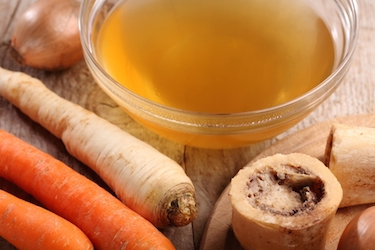 Bone Broth: Essentially, all you need to do to make stock is simmer some bones in water with some acid (I use apple cider vinegar – 1tsp), salt and pepper for many, many hours. I also put in a clove or two of garlic, some celery and a carrot or two to add a bit more flavor. You can use beef, chicken, lamb, fish or any other bones you have around. Once the bones begin to soften you take it off the heat, skim the excess fat from the top and refrigerate until ready to use as a base for any soup)
Bone Broth: Essentially, all you need to do to make stock is simmer some bones in water with some acid (I use apple cider vinegar – 1tsp), salt and pepper for many, many hours. I also put in a clove or two of garlic, some celery and a carrot or two to add a bit more flavor. You can use beef, chicken, lamb, fish or any other bones you have around. Once the bones begin to soften you take it off the heat, skim the excess fat from the top and refrigerate until ready to use as a base for any soup)
2 tbsp camilina oil (can also use organic ghee or olive oil)
1 medium onion – diced into small-medium pieces
1 clove garlic – cut into small pieces
Fresh ginger – approximately a 2 inch piece minced
2 stalks organic celery – chopped
2 medium sized carrots – cut into small- medium sized pieces (or the size you like best)
I medium sized sweet potato or yam – Cut into 1” cubes
1 tbsp dried seaweed (any type will work but it depends on your taste – I use dried wakame)
3 stalks of organic chard or a bunch spinach -chard cut into medium sized pieces
1 can organic beans (black eyed peas, black beans, chickpeas or cubed organic non-GMO firm tofu) – I use Eden organics because it’s BPA (bisphenol-A) free. Rinse beans or cube tofu
6 cups of stock (bone broth, chicken, beef or vegetable stock)
Salt and pepper to taste (note, seaweed adds a natural salty taste so best to wait until the end of cooking to add any additional salt
1/4 tsp celery seed
pinch of savory, marjoram
1 bay leaf
spices options: spice it up! Ginger, celery seed, savoury, marjoram, thyme, tarragon, bay leaf, salt pepper, turmeric (really detoxes and moves things), paprika (it adds a nice warm smoky flavour…etc.. Just play around and use the spices that you’re drawn to. It should be fun!
Directions:
Heat oil in pan
Add the onions, garlic and ginger and sautee over low heat until soft
Add carrots, and celery and spices. Sautee until slightly soft
Add broth and bring to boil. Add the yam and seaweed. Reduce to simmer.
Let simmer for 20 minutes then add the beans or tofu. Simmer for an additional 40 minutes adding the chard in at the very end.
You can cook a big pot on the weekend and then just heat it up one bowl at a time for breakfast during the week.
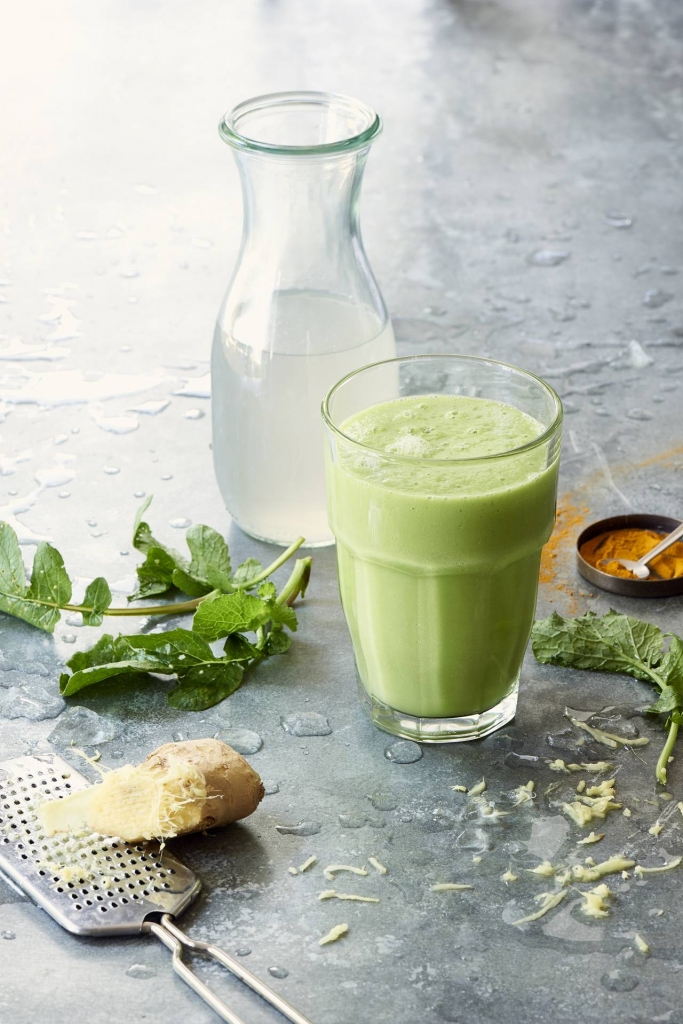 Warm ginger pear green smoothie – a winter version of the beloved smoothie
Warm ginger pear green smoothie – a winter version of the beloved smoothie
1 ripe pear
½ apple
ginger (1/2 tsp dried or you can use fresh if you prefer),
½-1tsp cinnamon,
1 cup unsweetened pomegranate juice (you can also use organic apple cider or mix the two) – heat on stove until quite warm
½ cup Organic blueberries – (put in with apple cider while it’s warming if they’re frozen)
1 tbsp chia seeds (boil water and pour 3/4cup of boiling water over chia seeds and let sit)
Two stalks of Kale, stems removed.
Put all ingredients in blender after warmed.
Blend until very smooth. If it’s too thick you can just add a little more hot water to customize to the consistency you like
Enjoy!!
Build it up – Nourishing Root Veggie soup for a cold winter’s night
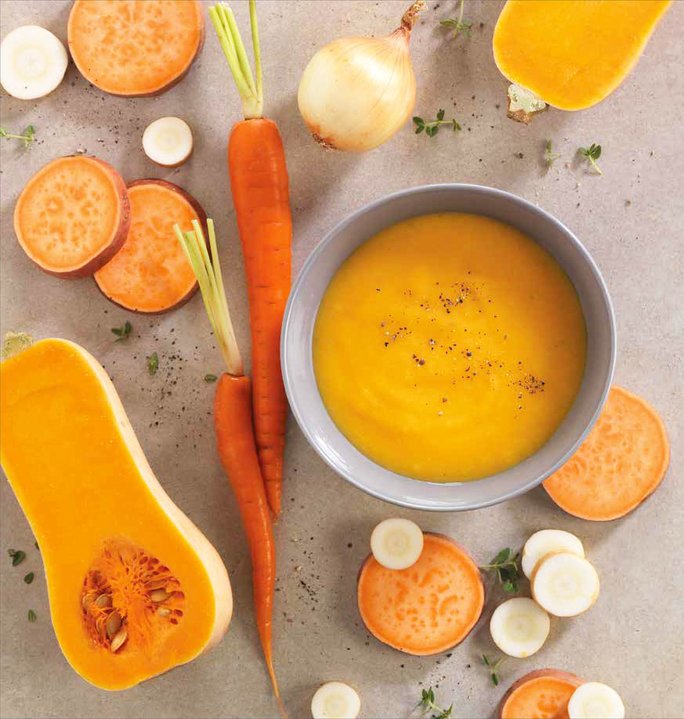 2 tbsp olive oil / avocado oil /coconut oil
2 tbsp olive oil / avocado oil /coconut oil
1 Onion – chopped
Garlic – finely chopped
1 stock celery – coarsely chopped
1 carrot – diced
1 small yam/sweet potato – cubed
celeriac root – cubed into 1” cubes
½ cup red lentils
2 cups bone broth (or chicken broth or veggie bone broth depending on your taste)
Thyme – to taste (ample pinch)
Salt and pepper to taste
Drizzle olive oil or finish with a dollop of crème fresh
Sautee onions and garlic on low-medium heat until soft (5 mins). Add carrot, celery, sweet potato and celeriac root and sautee until soft. Add the broth, lentils and the thyme and bring to soft boil. Allow to simmer for about 30 minutes. Once all the vegetables are soft right thought, puree with a hand blender until silky smooth.
Finish with a drizzle of olive oil or a dollop of crème fresh.
Mmmmm cozy up and enjoy!
Winter Foods in Focus
Built with my inspiring chef friend Joshna Maharaj, this delicious blend was developed for keeping you warm in the heart of winter or for those of you who tend to be cold year round.
Warming, nourishing and so darn tasty, this blend lends itself to slow cooking food. We created a nourishing root veggie soup but it can be used to rub on meats for slow roasting or add to curries you want to have that extra mmmmm toasty warmth.
You can easily prepare a jar of this to have on hand in your pantry. Very reminiscent of East Indian spice mixes, this wise blend has been nourishing people for centuries.
Including some of the warm yang spices in your diet is the perfect balance to the cold yin weather of winter.
Warming Spice Blend 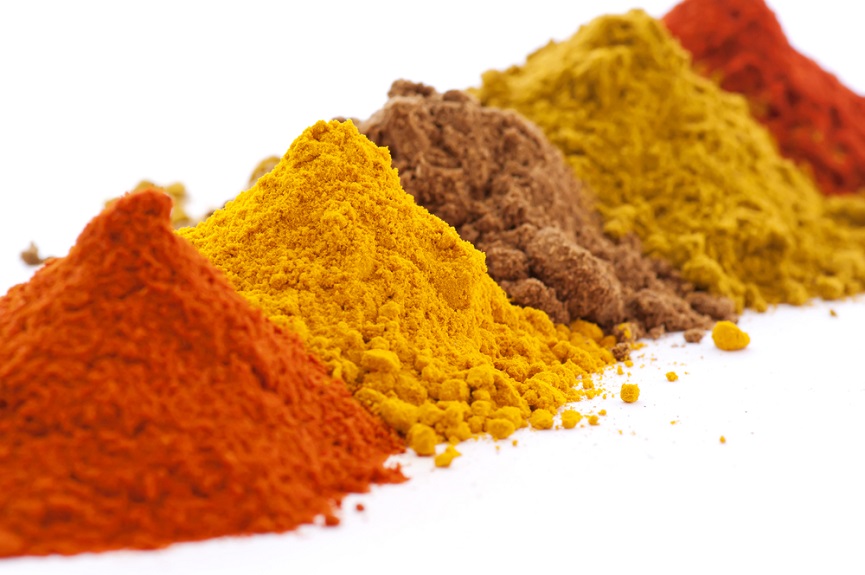
Makes about 1 tbsp
Ingredients
1 tsp ground cumin
½ tsp ground black pepper
¼ tsp ground cardamom
1/8 tsp ground nutmeg
½ tsp ground cinnamon
½ tsp ground ginger
Method
- Combine all ingredients in a small bowl and stir. Multiply the recipe by 5-6 if you want to keep on hand and store in an airtight container.
Orange Root Soup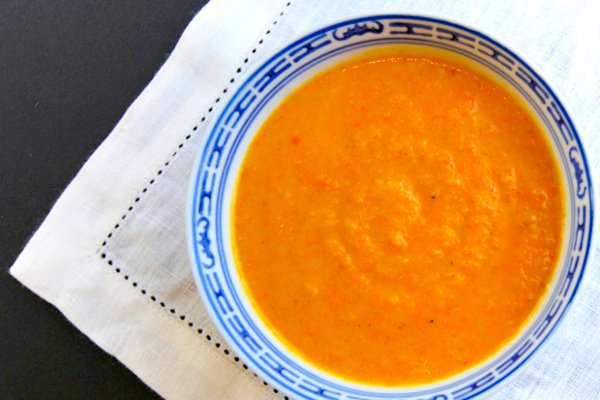
A delicious and nourishing soup to warm you up from the first crisp night of fall right through to spring. Serves 4-6
Ingredients
3 tbsp vegetable oil
1 medium onion, peeled and diced
2 cloves garlic, minced
1 1-inch piece ginger, peeled and minced
4 tsp Yang Spice Blend
1 medium sweet potato, peeled and chopped into a 1-inch dice
½ butternut squash, peeled, seeded and chopped into a 1-inch dice
3 medium carrots, peeled and chopped into 1-inch pieces
2/3 cup red lentils
1 tsp salt
juice of ½ lemon
¼ cup sliced almonds, toasted
Method
- In a large soup pot, heat vegetable oil on medium high heat. Add onion and sauté for 3 minutes, until translucent. Add garlic and ginger and sauté for another 2 minutes to lightly brown. Add spice blend and cook for another minute.
- Add sweet potato, squash, carrots & lentils and fill to the level of the vegetables with water. Cover pot and bring to a boil. Reduce heat to a simmer and cook for 30 minutes, when all vegetables should be tender.
- Remove pot from heat. Using an immersion blender, puree soup until very fine, going a bit further than you think you need to. Add salt and lemon juice and stir to combine. Taste and adjust seasoning as necessary. Serve garnish with toasted almonds.
Cinnamon 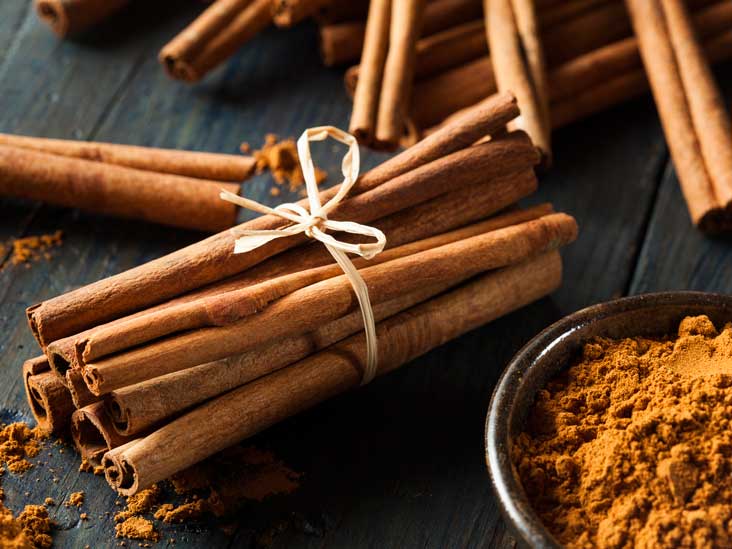
This soup builds our root energy – the digestive system (spleen/stomach/pancreas system in TCM) loves orange coloured vegetables and with the addition of the warm spice blend, it helps to build heat, digestive fire and aids in the absorption of nutrients. This helps us to build our energy (or Qi) and keep our digestive system strong year round.

